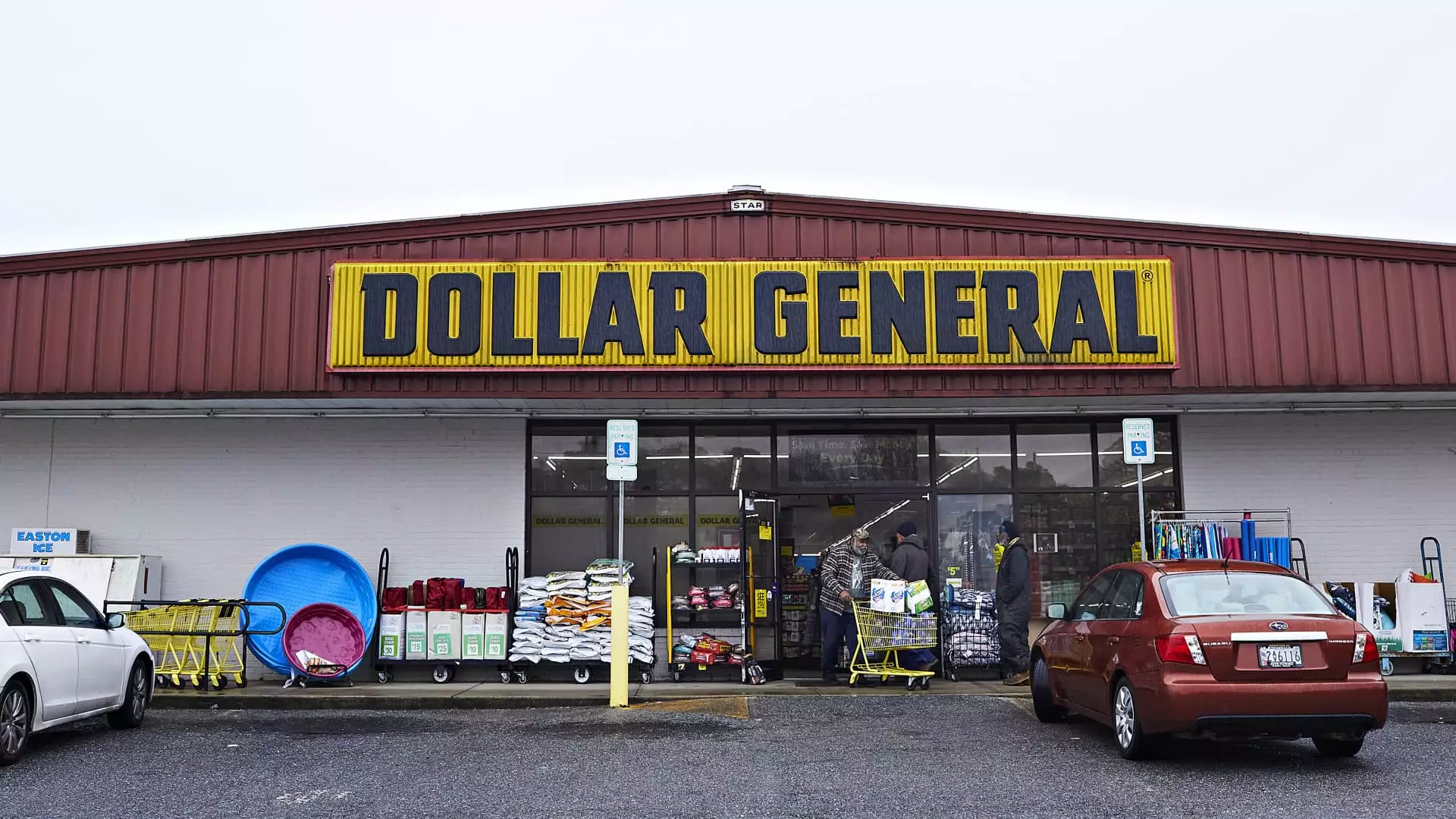In a striking display of financial performance, Dollar General has emerged as one of the top-performing stocks within the first 100 days of President Donald Trump’s second term, boasting a remarkable 36% increase in its share price. This rise positions it as one of the leading contenders on the S&P 500, second only to software powerhouse Palantir and tobacco titan Philip Morris International. While the broader consumer staples sector has only managed a modest return of 6% in the same timeframe, Dollar General’s upward trajectory stands out significantly—especially when juxtaposed with its competitors like Dollar Tree and Walmart, which have not fared as well.
This surge is particularly noteworthy as it occurs against a backdrop of economic uncertainty. Concerns regarding inflation and the implications of Trump’s tariffs have prompted a significant rotation of investor focus from growth stocks—considered riskier in turbulent markets—to safer options, such as consumer staples, which include discount retailers like Dollar General. With historical evidence suggesting that dollar stores thrive in softer economic landscapes, it’s essential to recognize how this strategic positioning supports Dollar General’s gains.
Product Mix: A Safe Haven from Tariffs
One of the most compelling aspects of Dollar General’s success is its strategic product mix, which provides a buffer against the negative fallout of tariffs. Analysts note that only a minimal 4% of Dollar General’s purchases are imports, according to research from KeyBanc Capital Markets. This is a stark contrast to many larger retailers whose significant reliance on international products exposes them to tariff-induced costs. A staggering 82.2% of Dollar General’s sales derive from consumables, which are inherently less vulnerable to tariff increases than discretionary products like seasonal or non-essential items.
These insights paint a clear picture: Dollar General has effectively positioned itself as a more resilient player within the retail landscape, largely due to its focus on consumables—a realm less impacted by the trade war’s fallout. In a market where the effective tariff rate on Chinese goods can be as high as 145%, this protective layer becomes increasingly critical.
A Cautious Road to Recovery
Despite the robust performance in recent weeks, it’s essential to approach Dollar General’s future with a degree of caution. The stock remains down over 36% from its 52-week high, not to mention its steep 65% decline from its all-time peak last October. The soaring stock prices of recent days cannot wholly mask the underlying challenges Dollar General faces, exacerbated by a disappointing earnings report issued last August.
As CEO Todd Vasos embarks on a turnaround journey, a sharp focus on productivity and maximizing the potential of existing stores has shown early signs of success. This strategy offers hope, but the company must grapple with formidable competition from giants like Walmart, Amazon, and Costco, whose expanding e-commerce capabilities threaten to siphon potential customers. Walmart’s successful membership platform, Walmart+, only compounds the challenge, placing traditional dollar stores at a crossroads as they seek to retain their consumer base.
Gaining Ground Amid Stiff Competition
Despite formidable opponents in the retail sector, Dollar General has found ways to attract a diverse customer demographic, particularly those consumers trading down from higher-priced shopping experiences. This trend toward “trade-down” behavior among middle-income shoppers is critical for Dollar General as it seeks to offset potential losses stemming from its primary low-income customer base. Nevertheless, analysts caution that while demand for Dollar General’s offerings remains strong, fulfilling that demand amidst rising pressures may still pose challenges.
The core customer for Dollar General, often stretched thin financially, faces mounting pressures from broader economic shifts. Issues such as the potential expiration of the 2017 tax cuts and fluctuations in the Supplemental Nutrition Assistance Program (SNAP) may tighten the purse strings of lower-income shoppers even further. These external variables place an additional strain on Dollar General’s strategic positioning, highlighting the delicate balance between providing essential goods at accessible prices and maintaining corporate health.
A Market to Watch Closely
While Dollar General’s stock has shown a commendable resurgence alongside broader market dynamics, the road ahead is anything but certain. Economic headwinds, fierce competition, and customer pressure all loom large on the horizon. The discount retailer may have navigated recent storms with resilience, but it must remain vigilant and agile to sustain its newfound momentum. In a landscape where fortunes can shift rapidly, Dollar General’s journey provides a revealing glimpse into the complexities of modern retail and the challenging interplay of consumer behavior, corporate strategy, and the ever-changing economic milieu.

